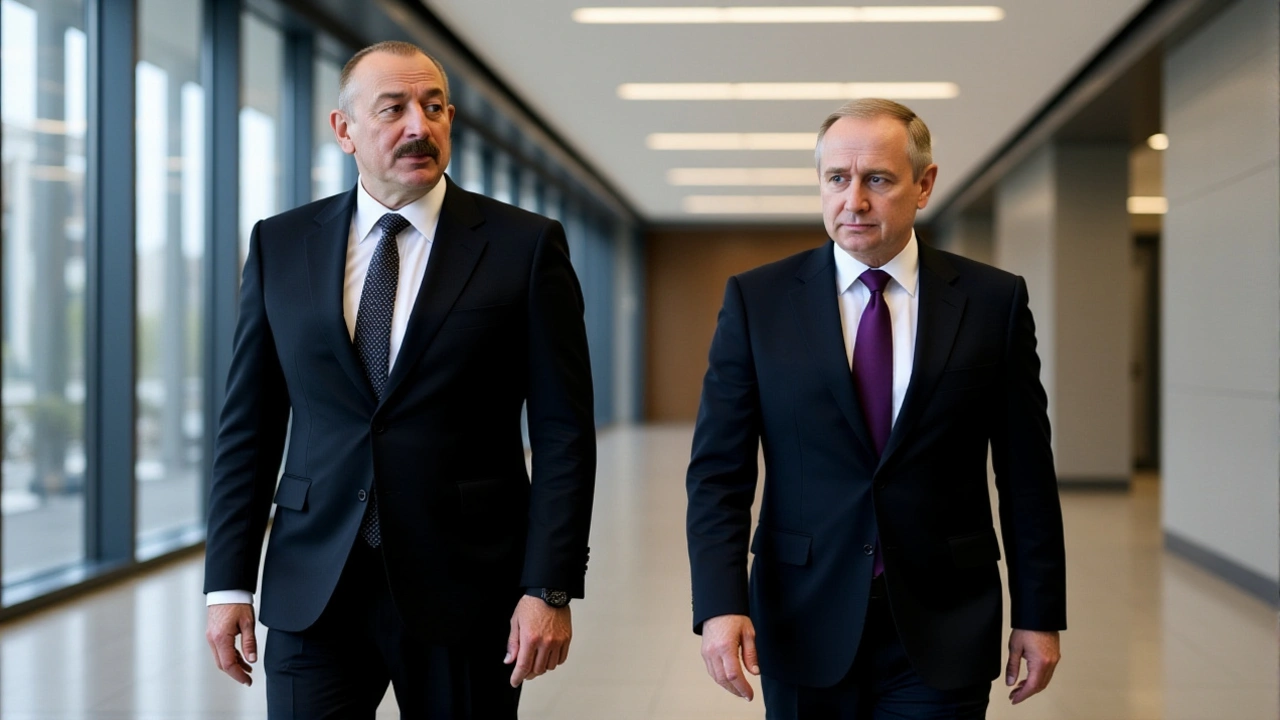- Osasuna vs Elche Prediction: Can the Home Fortress Hold in Pamplona? Sep 25, 2025
- Toni Kroos to Retire: Legendary Midfielder's Final Euro 2024 Bow with Germany May 22, 2024
- Liverpool Star Diogo Jota and Brother Killed in Tragic Car Crash Near Zamora Jul 3, 2025
- Chelsea Pursues Another Victory Against Panathinaikos in UEFA Conference League Clash Oct 25, 2024
- Arthur Zwane Steps Down as MKMVA Secretary-General Amid ANC Power Struggles Jul 2, 2024
Vladimir Putin
When you read about Vladimir Putin, the long‑standing President of Russia known for consolidating power and shaping foreign policy. Also known as Putin, he has been a central figure in global headlines for over two decades. Stories about Vladimir Putin range from domestic reforms to high‑stakes diplomacy, and the impact of his decisions ripples through economics, security, and culture. Below we’ll unpack how his leadership intersects with the key forces that define today’s geopolitical scene.
Key forces that surround Putin’s rule
The first force to understand is Russia, the world’s largest country by land area, rich in natural resources and home to a complex federal system. Russia’s oil and gas export model fuels its budget, while its demographic trends pose long‑term challenges for labor and growth. When Putin steers policy, he does so within this resource‑driven framework, balancing regional demands against a centralized agenda. This backdrop explains why energy prices and sanctions often dominate the news cycle around his name.
Next, the Kremlin, the historic seat of Russian executive power, housing the president’s office and key ministries, acts as the institutional engine behind every decree. The Kremlin’s bureaucracy translates Putin’s strategic vision into legal acts, from constitutional amendments to defense spending plans. Knowing how the Kremlin operates helps decode why certain policies appear swift while others stall behind legislative debate.
A third pillar is the ongoing Ukrainian conflict, the armed confrontation that began in 2014 and escalated dramatically in 2022, reshaping security dynamics across Europe. The conflict directly tests Putin’s foreign‑policy choices, affecting military budgeting, diplomatic outreach, and international sanctions. Each development—whether a ceasefire talk or a new frontline map—feeds back into Russia’s internal narrative and the Kremlin’s messaging strategy.
Finally, consider the broader arena of Russian politics, a system characterized by a dominant executive, controlled media, and limited opposition participation. Russian politics demands that Putin manage elite loyalties, public perception, and elite patronage networks. The balance between popular support and elite backing often dictates the timing of constitutional tweaks or economic reforms. Understanding this political fabric reveals why certain reforms gain traction while others face quiet resistance.
All these entities—Russia, the Kremlin, the Ukrainian conflict, and Russian politics—are tightly interwoven with Putin’s decision‑making. As you scroll down, you’ll find a curated mix of articles that touch on his speeches, policy impacts, and the ripple effects across the continent. Whether you’re tracking sanctions, energy market shifts, or diplomatic moves, the collection below provides the context you need to make sense of a leader who continues to shape the global conversation.
Russia's Drone Strikes on SOCAR Push Azerbaijan Toward Ukraine
- Katlego Sean Mahaye
- Oct 14, 2025
Russian drone strikes on SOCAR's Odesa depot and earlier incidents push Azerbaijan closer to Ukraine, reshaping regional alliances.
